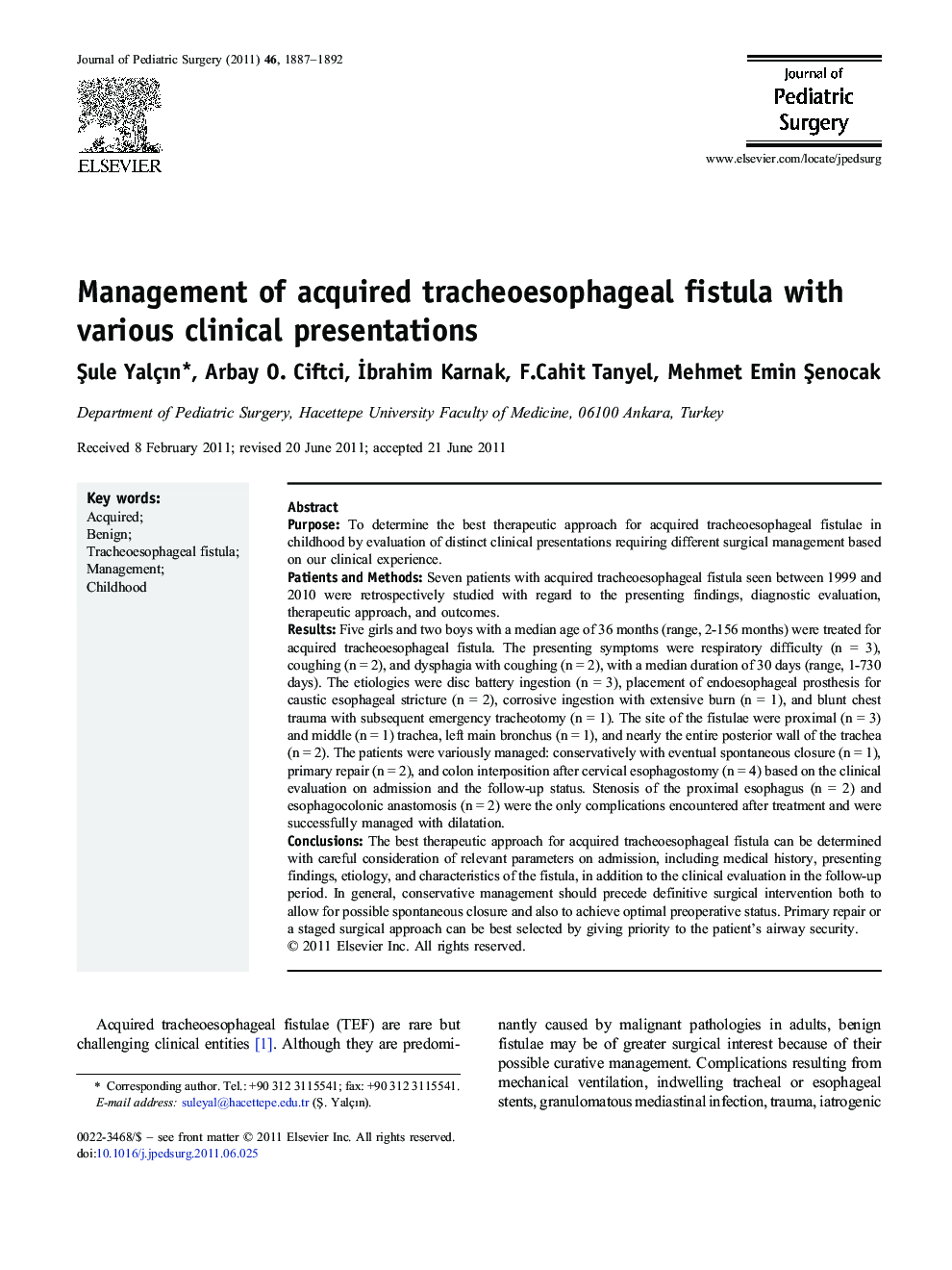| کد مقاله | کد نشریه | سال انتشار | مقاله انگلیسی | نسخه تمام متن |
|---|---|---|---|---|
| 4156376 | 1273772 | 2011 | 6 صفحه PDF | دانلود رایگان |

PurposeTo determine the best therapeutic approach for acquired tracheoesophageal fistulae in childhood by evaluation of distinct clinical presentations requiring different surgical management based on our clinical experience.Patients and MethodsSeven patients with acquired tracheoesophageal fistula seen between 1999 and 2010 were retrospectively studied with regard to the presenting findings, diagnostic evaluation, therapeutic approach, and outcomes.ResultsFive girls and two boys with a median age of 36 months (range, 2-156 months) were treated for acquired tracheoesophageal fistula. The presenting symptoms were respiratory difficulty (n = 3), coughing (n = 2), and dysphagia with coughing (n = 2), with a median duration of 30 days (range, 1-730 days). The etiologies were disc battery ingestion (n = 3), placement of endoesophageal prosthesis for caustic esophageal stricture (n = 2), corrosive ingestion with extensive burn (n = 1), and blunt chest trauma with subsequent emergency tracheotomy (n = 1). The site of the fistulae were proximal (n = 3) and middle (n = 1) trachea, left main bronchus (n = 1), and nearly the entire posterior wall of the trachea (n = 2). The patients were variously managed: conservatively with eventual spontaneous closure (n = 1), primary repair (n = 2), and colon interposition after cervical esophagostomy (n = 4) based on the clinical evaluation on admission and the follow-up status. Stenosis of the proximal esophagus (n = 2) and esophagocolonic anastomosis (n = 2) were the only complications encountered after treatment and were successfully managed with dilatation.ConclusionsThe best therapeutic approach for acquired tracheoesophageal fistula can be determined with careful consideration of relevant parameters on admission, including medical history, presenting findings, etiology, and characteristics of the fistula, in addition to the clinical evaluation in the follow-up period. In general, conservative management should precede definitive surgical intervention both to allow for possible spontaneous closure and also to achieve optimal preoperative status. Primary repair or a staged surgical approach can be best selected by giving priority to the patient's airway security.
Journal: Journal of Pediatric Surgery - Volume 46, Issue 10, October 2011, Pages 1887–1892